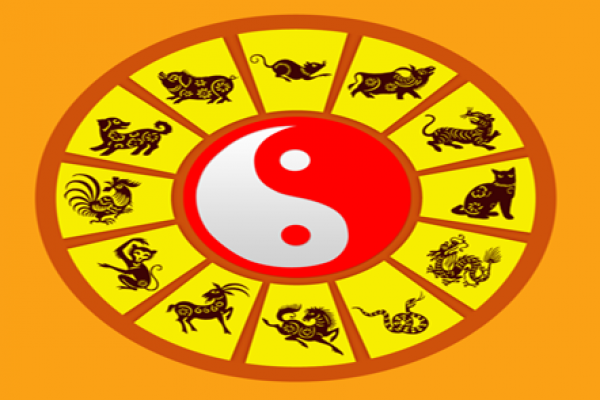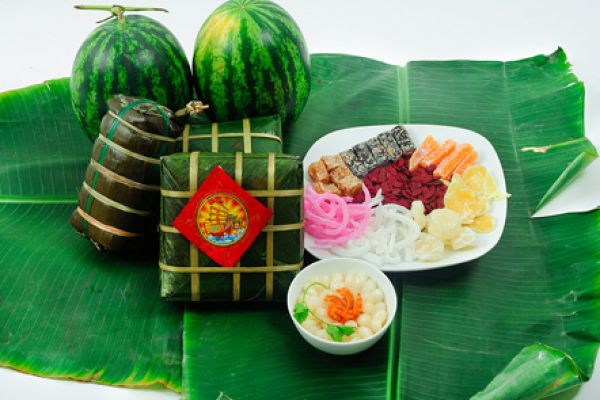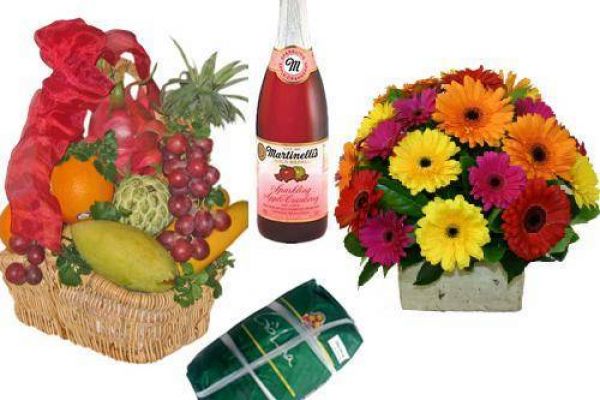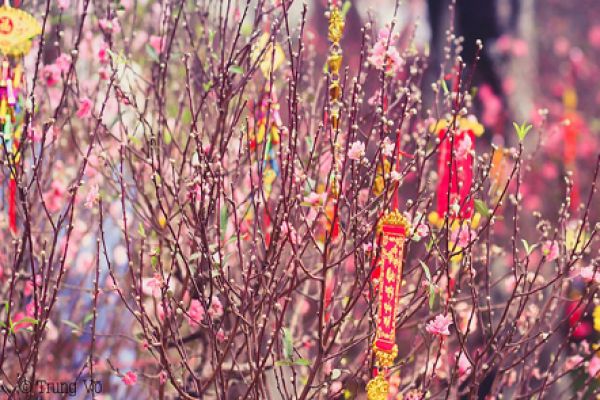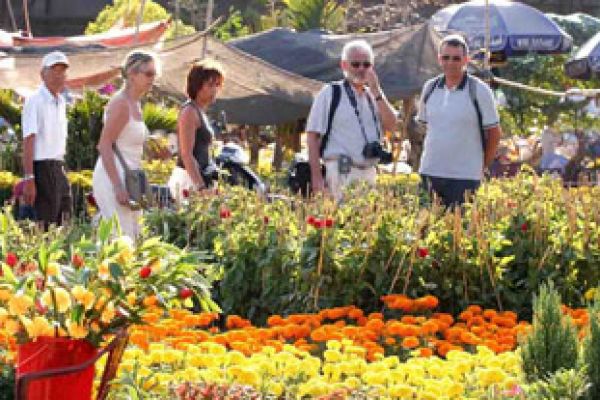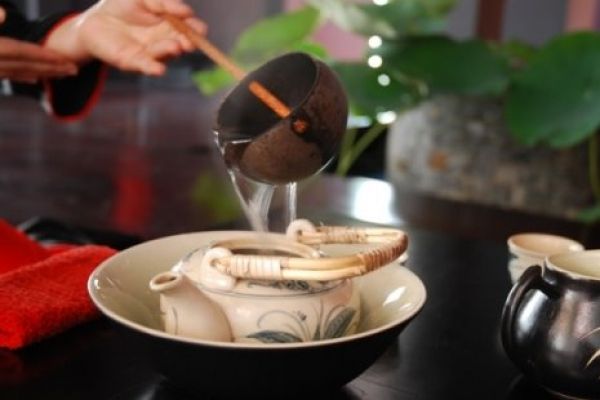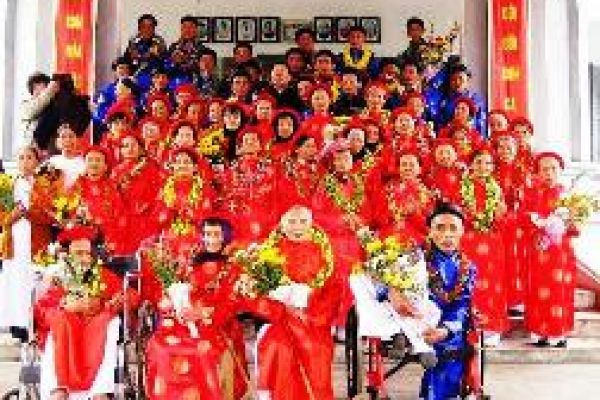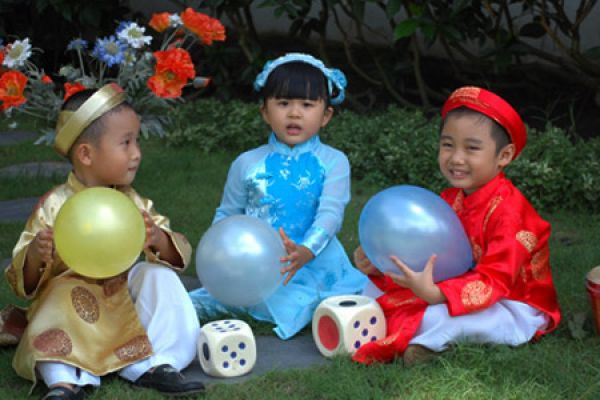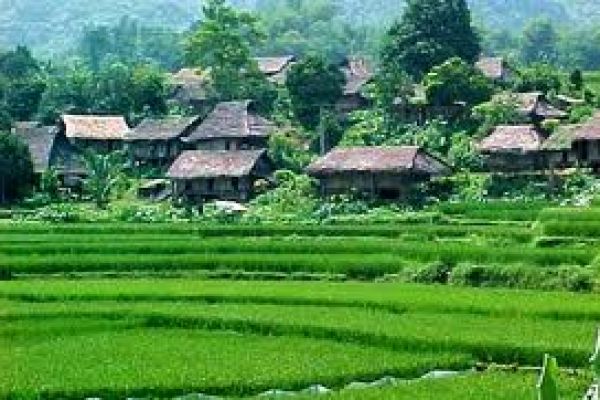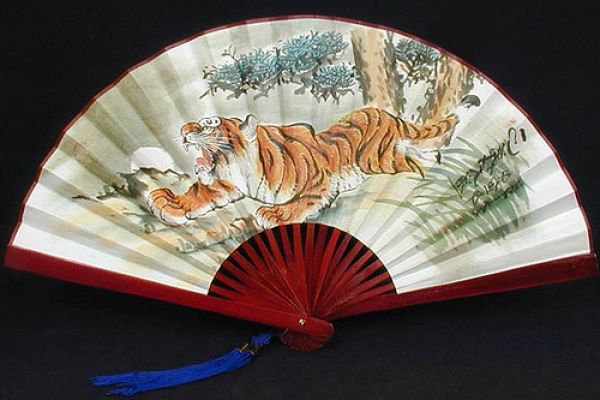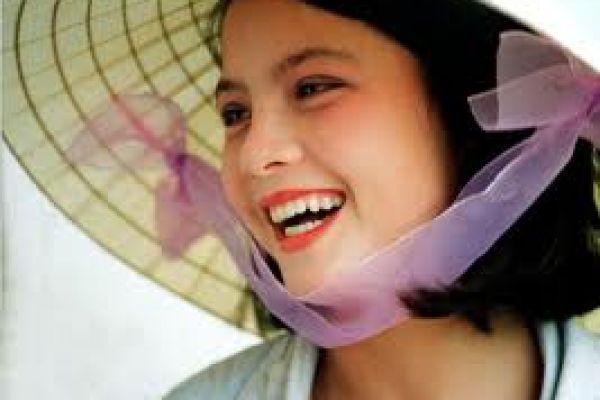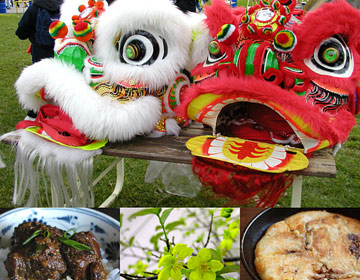
Every year, I look forward to the week leading up to the Lunar New Year – Tet Nguyen Dan, or just Tet, as we call it in Vietnamese. Why? For the simple reason that I take time off to make some of my favorite traditional Viet foods. Many of us rush around these days, barely catching our breaths to meet deadlines, only to face new ones. Multitasking, I’ve learned, is overrated.
When Tet comes along, I shut down and shut out the world for a few days. Tune out and focus on cleaning, cooking, and celebrating. Vietnamese Tet is a low-key, family-oriented holiday. It's homey by nature and people love it. Tet is like Christmas, Thanksgiving, Mother's Day and Father's Day all wrapped up into one. Traditionally, people took off a month from work. Modern times don't allow for that and we all create our own new traditions. 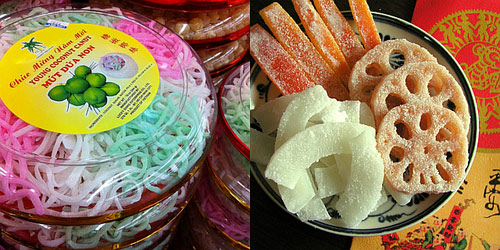
My Tet ritual starts at Asian grocery stores. I try not to brave the weekend crowds at Chinese and Vietnamese markets and instead go there on a weekday. That way, I get to look at all the crazy sweets and snacks that are for sale for new year. They’re usually well positioned near the market’s entrance so you can’t miss them.
Day-glo candied coconut remind me to make a batch from Into the Vietnamese Kitchen. They’re one of my favorites Tet treats. Sweetmeats (candied nibbles) and other kinds of candies are traditionally offered to guests and enjoyed this time of year. Viet people love to make their own and I follow suit. Below is a comparison of stuff from the store versus homemade candied coconut, lotus root and orange peels:
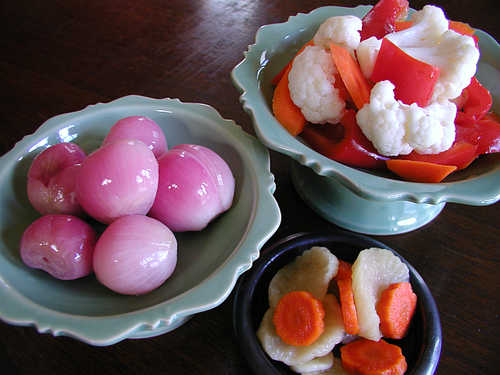
When I get to the produce department, I examine the fruit – tangerines with their leaves still attached are what I tend to buy. There’s usually a pile of daikon radish, which gets me to think about Vietnamese pickles. If I have enough time to dry daikon and carrot in the dehydrator, I go for dua mon, a salty-sweet, garlicky pickle. They’re a must-have for Vietnamese Tet as you munch on them with slices of banh chung sticky rice cakes.
But so are pickled shallots, which are fabulous with a gin on the rocks too. Then I think of another favorite pickle -- dua gop, a tangy mixed vegetable pickle that my family makes with cauliflower, carrot and red bell pepper. Swoon for the pickles, tasty reminders of home:
Which brings me to the main reason for going to the market – to buy ingredients for the adobe-brick size cakes. They’re ginormous dumplings of sorts and my mom taught me how to make them years ago when I was writing the Vietnamese cookbook. They embody Vietnamese Tet by virtue of their simplicity – stick rice, pork, mung beans, S&P and fish sauce encased in green leaves (banana and bamboo in my case) and boiled for hours. The result is soft, a little fatty, and pale green. Here's what my homemade banh chung looks like: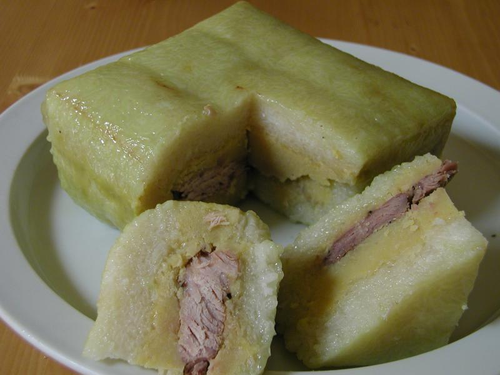
My parents are from northern Vietnam so our Tet sticky rice cakes are square. Folks from the southern region favor cylindrical banh tet, which are super hard to shape. I use a wood mold for wrapping my banh chung because frankly, I know my personal limits.
The meat case at an Asian market offers too many alluring things for Tet – pork or beef simmered in caramel sauce. There’s sumptuous pork belly or pork leg, perfect for cooking with caramel sauce, coconut water, and eggs for a southern Vietnamese holiday classic. Ooh, the fatty beef rough flank (nam) is darn good with ginger and caramel sauce.
Whatever I buy, I tack to it a rack of ribs. I get the rack sawed by the butcher into strips so I can make my mother’s family recipe for suon kho – riblets that are marinated, grilled, then simmered in caramel sauce till they’re practically like beef. That dish (in the collage at the top on the left) evokes the story my mom tells of how her family slaughtered a pig for Tet.
They’d stay up to make all kinds of foods from the various parts. Some were in charge of the banh chung, while others made sausages – silky Vietnamese gio lua, sweet Chinese lap xuong (lap chong), etc. With the ribs, they’d give them a char over an open flame. A fire was already going for the cauldron that would boil all the banh chung. The char imparted a roasty flavor to the riblets that would then be simmered. It’s a dish that my husband and I look forward to every Tet.
The beauty of Tet is that you’re suppose to celebrate with foods that you made in advance. That way you have time to hang loose and relax. Going to a restaurant during Tet is not a typical thing. You stay at home and take stock of the year past as well as the future. Friends and family stop by – or they give you a call or email these days. I call my parents and they give me a special Tet blessing.
The house is super clean on the first days of the New Year. I stay at home and enjoy the fruits of my labor.
Notes:
And if you’re unsure, Tet is celebrated on the same day as Chinese New Year: February 10 in 2013.Most of the recipes mentioned in this article are part of Into the Vietnamese Kitchen. If you don't have a copy, check your local library, bookstore, or online book vendor.
Vietworldkitchen

